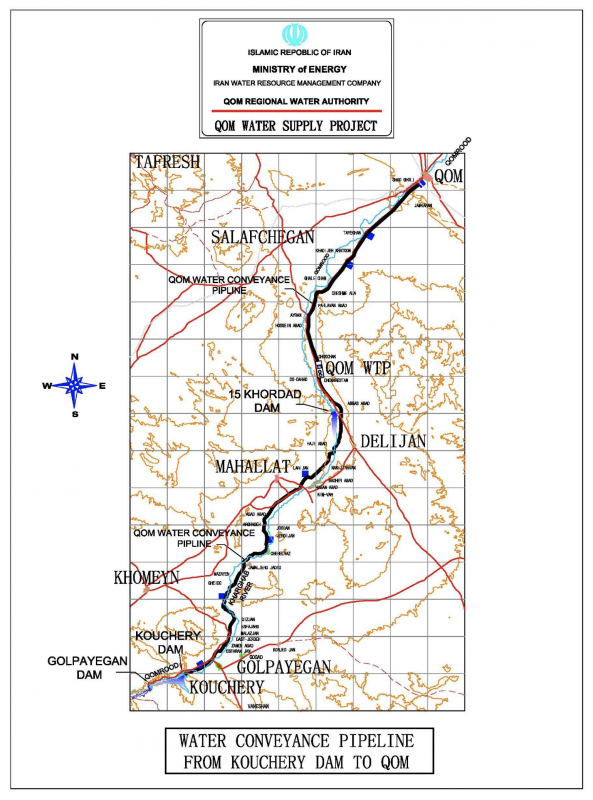Qom Water Supply Iran.
Introduction
The city of Qom was facing a growing problem of clean and safe drinking water shortage. The sources of water supply were not sufficient to meet the demand of city drinking water in the recent years because of growing population. The increasing water demand was being met by the over- extraction of ground water.
The growing urbanization, industrialization and land farming required the development of new infrastructure in water sector of the country. The increasing water demand would be met keeping the negative environmental impacts to the minimum. Government of Iran (GOI) has placed water sector as a high priority and is aware of the constraints and issues facing the sector. Acknowledging the severity and need for a national level commitment, GOI formulated and approved a Water Resources Strategy.
Objectives
The objective of the project was to improve the quality of life by permanently supplying safe drinking water to the city of Qom and the neighboring villages and to improve the environmental conditions.
As a part of the project, 2 additional modules were to be constructed (but not completed) adjacent to the existing Qom WTP located in Doe-dehak, 70 km from Qom and 20 km from the city of Delijan. With construction of the new modules after completion, an additional capacity of 142.5 million m³ per year would increase the total treatment capacity of Qom WTP to approximately 200 million m³ per year or 6660 liter/second.
To provide the required volume of drinking water for the city of Qom, there was need to construct 3 water reservoirs adjacent to the existing reservoirs in Doe-baradaran, each with the capacity of 20,000 m³ and also construction of 1 water reservoir with the capacity of 10,000 m³ next to the existing reservoirs in Yazdan. The scope of contractor's works included the provision of utilities as well as the required piping to connect the new reservoirs to the existing reservoirs.
Contractors work included supply, transportation and installation of all material & equipment as well as the execution of all works related to construction of Doe-baradaran & Yazdan reservoirs.

Positive Impact
- Incidence of water - borne diseases among targeted population reduced by 50% i.e., from 0.07% of the target population to 0.035% by 2022.
- Increased access to safe drinking water in Qom city from 98.4% to 100% in Qom city and from 62% to 100% in the neighboring villages for the target population of 1.19 million by 2021 and 1.87 million by 2038.
- An additional water treatment capacity of 150 MCM (0.4 MCM/day) was added to Qom WTP by 2021.
- New main distribution pipeline system of 600-600mm dia, 23 km was completed 2017.
- Treated drinking water quality as per the National and WHO standards, i.e., reduce TDS levels to <500 in treated water compared to the existing levels of 2500 mg/lit by year 2014.
- Pipeline system of 2000mm and 1800mm dia sizes, 175 km, from Kouchery dam to Qom was completed 2013.